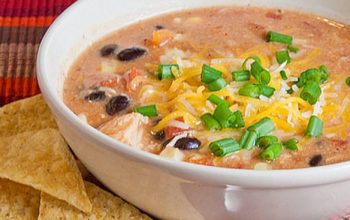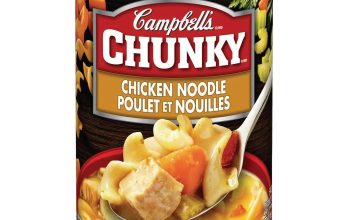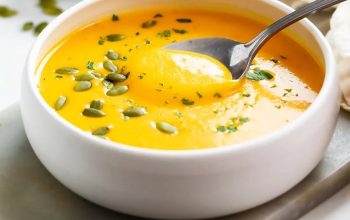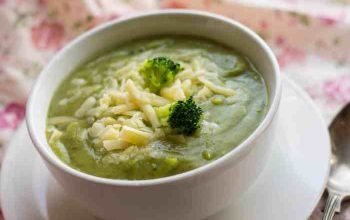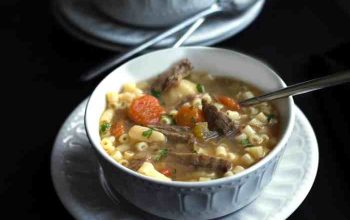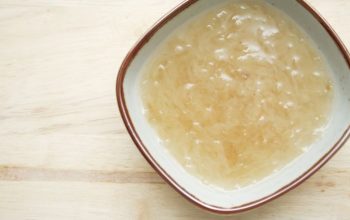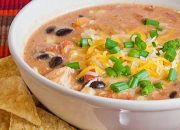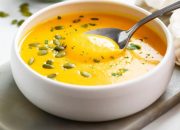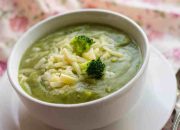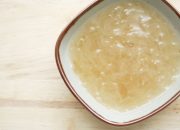A Comprehensive Exploration of Chicken Soup Recipes: Soup Recipes Chicken
Soup recipes chicken – Chicken soup, a culinary staple across numerous cultures, boasts a rich history and undeniable nutritional value. Its comforting nature and versatility have cemented its place in kitchens worldwide, evolving from simple broths to complex, flavourful creations. This exploration delves into the diverse world of chicken soup recipes, examining their historical context, nutritional benefits, various culinary interpretations, and practical cooking techniques.
Nutritional Benefits of Chicken Soup
Chicken soup offers a wealth of nutritional advantages. The broth itself provides electrolytes, crucial for hydration, particularly during illness. Chicken is a lean protein source, essential for muscle repair and growth. The inclusion of vegetables contributes vitamins, minerals, and fiber, enhancing the soup’s overall nutritional profile. For instance, carrots supply beta-carotene, a precursor to Vitamin A, while celery offers antioxidants.
The combination of these elements makes chicken soup a nourishing and wholesome meal.
Chicken Soup Recipe Variations Across Cuisines
Chicken soup transcends geographical boundaries, manifesting in diverse forms across global cuisines. Classic Western chicken noodle soup, characterized by its simple yet comforting nature, differs significantly from richer, more complex Asian variations incorporating ingredients like ginger, soy sauce, and mushrooms. South American versions might include corn, potatoes, and cilantro, reflecting the regional palette. These variations highlight the adaptability and cultural significance of this dish.
Chicken Soup Recipe Variations: A Comparative Analysis
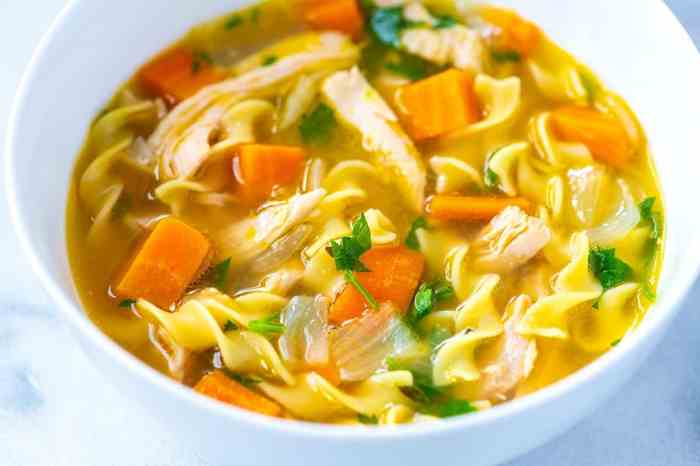
Source: inspiredtaste.net
The following table compares five distinct chicken soup recipes, highlighting their unique characteristics.
| Recipe Name | Key Ingredients | Preparation Time (approx.) | Taste Profile |
|---|---|---|---|
| Classic Chicken Noodle Soup | Chicken broth, chicken, noodles, carrots, celery, onion | 1-1.5 hours | Savory, comforting, subtly sweet from vegetables |
| Creamy Chicken Soup | Chicken broth, chicken, heavy cream, carrots, celery, onion, herbs | 1.5-2 hours | Rich, creamy, savory, slightly decadent |
| Lemon Chicken Soup | Chicken broth, chicken, lemon juice, lemon zest, spinach, orzo pasta | 1-1.25 hours | Bright, citrusy, savory, slightly tart |
| Spicy Chicken Soup | Chicken broth, chicken, chili flakes, ginger, garlic, green chilies, vegetables | 1-1.5 hours | Savory, spicy, warming, pungent |
| Chicken and Wild Rice Soup | Chicken broth, chicken, wild rice, mushrooms, celery, onion, herbs | 1.5-2 hours | Earthy, nutty, savory, complex |
An infographic illustrating these variations would visually represent the key ingredients of each recipe (e.g., a visual representation of a bowl of each soup with labeled ingredients) and their relative proportions.
The Importance of Key Ingredients in Chicken Soup
Each ingredient plays a crucial role in defining the taste and nutritional value of chicken soup. Chicken broth forms the base, providing flavor and nutrients. Vegetables add texture, sweetness, and essential vitamins. Herbs and spices enhance the aromatic profile and impart depth of flavor. For example, parsley adds freshness, while thyme contributes a warm, earthy note.
The careful selection and combination of ingredients are paramount to achieving a balanced and delicious soup.
Ingredient Substitutions and Dietary Considerations
Dietary restrictions and preferences necessitate ingredient substitutions. For example, vegetable broth can replace chicken broth for vegetarians. Gluten-free noodles or alternative grains can be used to cater to those with gluten intolerance. Individuals seeking low-sodium options should use low-sodium broth and limit added salt. These adjustments ensure the recipe’s accessibility to a wider audience.
Cooking Methods for Chicken Soup: A Comparison
Three primary cooking methods—stovetop, slow cooker, and pressure cooker—offer varying advantages for preparing chicken soup. The stovetop method allows for close monitoring and precise control over the cooking process. Slow cookers provide a hands-off approach, ideal for long, slow cooking, which enhances flavor development. Pressure cookers significantly reduce cooking time, making it a convenient option.
Many Batak families hold dear their traditional chicken soup recipes, passed down through generations. These often feature simple ingredients, highlighting the natural flavours of the chicken. A delicious variation involves creamy additions, leading to exploration of recipes using cream of chicken soup and pasta , which offer a richer, more comforting experience. Ultimately, whether simple or creamy, chicken soup remains a staple in our culinary heritage.
Step-by-Step Cooking Instructions for Each Method
Detailed step-by-step instructions for each cooking method would be included here, outlining the precise procedures and timing for each. These instructions would cover the preparation of the chicken, the addition of vegetables and seasonings, and the final simmering or pressure cooking stage. Specific timings would be provided based on the chosen method and the type of chicken used.
Tips and Tricks for Optimal Flavor and Texture
Achieving optimal flavor and texture requires attention to detail. Properly browning the chicken before adding it to the broth enhances its flavor. Simmering the soup gently over low heat for an extended period allows the flavors to meld and develop fully. Seasoning the soup in stages ensures a well-balanced flavor profile. These techniques are crucial for creating a truly exceptional chicken soup.
Serving Chicken Soup: Creative Presentation and Variations, Soup recipes chicken

Source: tasteofhome.com
Chicken soup’s versatility extends to its serving style. It can be enjoyed as a main course, appetizer, or side dish. Garnishes such as fresh herbs (parsley, chives), croutons, lemon wedges, and a drizzle of olive oil enhance its visual appeal and flavor. The addition of cooked pasta, rice, or dumplings adds substance and texture.
Unique Serving Suggestions
- Chicken Soup Shooters: Serve in small shot glasses for an elegant appetizer.
- Soup Bar: Offer a variety of toppings (herbs, cheese, croutons) for guests to customize their bowls.
- Chicken Soup Dumplings: Incorporate small chicken and vegetable dumplings into the soup.
- Curried Chicken Soup: Add curry powder for a flavorful twist.
- Chicken Soup with Grilled Cheese Croutons: Use grilled cheese sandwiches cut into cubes as a unique crouton alternative.
Storage and Reheating of Leftover Chicken Soup
Proper storage is essential for maintaining the quality and safety of leftover chicken soup. Allow the soup to cool completely before transferring it to airtight containers and refrigerating it. The soup can be stored in the refrigerator for up to 3-4 days. Reheating should be done gently to avoid scorching or compromising the texture. Microwave heating is convenient, but stovetop reheating provides more even heat distribution.
Creative Uses for Leftover Chicken Soup
Leftover chicken soup can be repurposed into various dishes. It can serve as the base for chicken pot pie, providing a flavorful sauce. The chicken can be incorporated into chicken salad sandwiches or used as a filling for tacos or enchiladas. These resourceful applications minimize food waste and extend the enjoyment of this versatile dish.
Helpful Answers
Can I freeze chicken soup?
Yes, chicken soup freezes well. Allow it to cool completely before storing in airtight containers for up to 3 months.
What type of chicken is best for soup?
Bone-in, skin-on chicken pieces (thighs and drumsticks) yield the richest broth. You can also use a whole chicken.
How can I make my chicken soup thicker?
Add a cornstarch slurry (cornstarch mixed with cold water) or cook the soup longer to reduce the liquid. You can also add noodles or rice.
Can I use pre-made chicken broth?
Yes, but homemade broth often has a richer flavor. If using store-bought, choose low-sodium options.
What are some healthy additions to chicken soup?
Add plenty of vegetables like carrots, celery, onions, and leafy greens for added vitamins and fiber.

